Human Orbital Spaceflights
![]()
International Flight No. 253STS-120Discovery (34)120th Space Shuttle missionUSA |
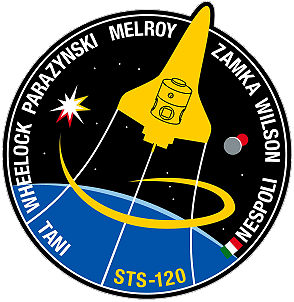 |
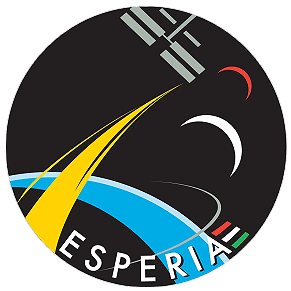 |
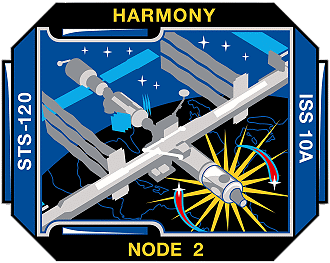 |
||
![]()
Launch, orbit and landing data
walkout photo |
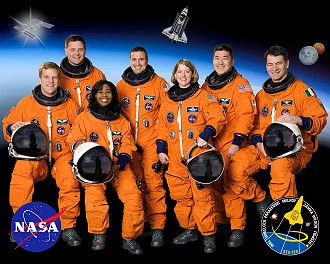 |
|||||||||||||||||||||||||||||||||
alternative crew photo |
alternative crew photo |
|||||||||||||||||||||||||||||||||
alternative crew photo |
alternative crew photo |
|||||||||||||||||||||||||||||||||
alternative crew photo |
alternative crew photo |
|||||||||||||||||||||||||||||||||
Crew
| No. | Surname | Given names | Position | Flight No. | Duration | Orbits | |
| 1 | Melroy | Pamela Ann | CDR | 3 | 15d 02h 22m 57s | 238 | |
| 2 | Zamka | George David "Zambo" | PLT | 1 | 15d 02h 22m 57s | 238 | |
| 3 | Parazynski | Scott Edward | MS-1, EV-1, RMS | 5 | 15d 02h 22m 57s | 238 | |
| 4 | Wilson | Stephanie Diana | MS-2, FE, RMS | 2 | 15d 02h 22m 57s | 238 | |
| 5 | Wheelock | Douglas Harry | MS-3, EV-2, RMS | 1 | 15d 02h 22m 57s | 238 | |
| 6 | Nespoli | Paolo Angelo | MS-4, IV-1, RMS | 1 | 15d 02h 22m 57s | 238 | |
| 7 | Tani | Daniel Michio | MS-5, EV-3, RMS | 2 | 119d 22h 28m 49s | 1888 |
Crew seating arrangement
|
 |
|
||||||||||||||||||||||||||||||||
Backup Crew
|
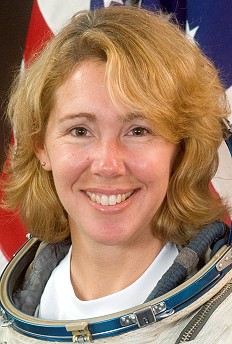 |
||||||||||
Hardware
| Orbiter : | OV-103 (34.) |
| SSME (1 / 2 / 3): | 2050-2 (6.) / 2048-2 (7.) / 2058-2 (2.) |
| SRB: | BI-131 / RSRM 98 |
| ET: | ET-120 (SLWT-28) |
| OMS Pod: | Left Pod 01 (37.) / Right Pod 03 (35.) |
| FWD RCS Pod: | FRC 3 (34.) |
| RMS: | 202 (10.) |
| EMU: | EMU No. 3004 (PLSS No. 1004) / EMU No. 3003 (PLSS No. 1003) |
Flight
|
Launch from Cape Canaveral (KSC) and
landing at Cape Canaveral (KSC), Runway 33. Following STS-118 in August 2007, NASA managers decided to make modifications to the External tank to be used on STS-120, and modify the liquid oxygen feed-line brackets. The change involved a new low-density foam application, and thinner gaskets. Shuttle Program Managers decided to do this to reduce the foam loss from the area that had been noted since STS-114's "Return to Flight" mission in 2005. STS-118 had a small gouge on the belly of the orbiter due to a chunk of foam that impacted during launch in August 2007. The week of September 17, 2007, NASA managers decided to delay Discovery's rollover to the Vehicle Assembly Building (VAB), due to a hydraulic fluid leak from the right main landing gear strut. The strut repair was successfully completed on September 19, 2007. Discovery then moved to the VAB, and was mated to the External Tank and Solid Rocket Boosters. Perched atop the Mobile Launcher Platform, Discovery arrived at Launch complex 39-A on September 30, 2007. NASA originally scheduled the launch for October 20, 2007, but due to the International Space Station program requirement, launch was delayed to October 23, 2007. STS-120 (ISS 10A / Node 2 "Harmony") delivered launch package 10A to the International Space Station (ISS). It consisted of the U.S. Harmony module (also known as Node 2), with four DC-to-DC Converter Unit (DDCU) racks and three Zero-g Storage Racks (ZSR) installed; a Power and Data Grapple Fixture (PDGF) for the station's robot arm, and a Shuttle Power Distribution Unit (SPDU). Harmony was built for NASA by Thales Alenia Space in Torino, Italy, as part of an agreement between NASA and the European Space Agency and was the first pressurized habitable module delivered to the station since the Pirs docking compartment was installed in August 2001. Expedition 16 Flight Engineer Daniel Tani served as a mission specialist aboard Discovery before rotating positions with station resident NASA astronaut Clayton Anderson after docking. Clayton Anderson arrived at the station aboard the space shuttle Atlantis during STS-117 in June 2007. Daniel Tani joined Expedition 16 Commander Peggy Whitson and Flight Engineer Yuri Malenchenko, who arrived at the station aboard the Russian Soyuz TMA-11 spacecraft October 12, 2007. Harmony, measuring 23.6 feet (7.2 meters) long, 14.5 feet (4.4 meters) wide and weighing 31,500 pounds (14,288 kg), is a utility hub, providing air, electrical power, water and other systems essential to support life on the station. It will distribute resources from the station's truss to the Destiny lab and to the European Space Agency's Columbus Research Laboratory and the Japanese Experiment Module (Kibo), when they are added to the station. The module will act as an internal connecting port and passageway to additional international science labs and cargo spacecraft. In addition to increasing the living and working space inside the station by more than 2,500 cubic feet (70.8 cubic meters), its exterior will serve as a work platform for the station's robotic arm, Canadarm2. Harmony is similar in shape to the Unity module, known also as Node 1, which was launched in 1998. Unity links the Destiny lab and the Russian Zarya Module. In addition to his tasks as an STS-120 mission specialist, European Space Agency (ESA) astronaut Paolo Nespoli had to undertake the European Esperia mission, during which he carried out a number of experiments on behalf of the European science community. Two of these experiments (Chromosome-2 and Neocytolysis) were sponsored by ESA. The other three experiments (HPA, FRTL-5 and SPORE) were sponsored by the Italian Space Agency, or ASI. Chromosome-2, Neocytolysis and HPA were experiments in the field of human physiology. FRTL-5 and SPORE were biology experiments. Paolo Nespoli also was conducting Educational Activities (see ARISS) coordinated by both ESA and ASI. The crew of STS-120 spent their first full day in space by performing the RCC survey, using the Shuttle Remote Manipulator System (SRMS), and the Orbiter Boom Sensor System (OBSS). The crew also worked on various tasks such as inspecting the Extravehicular Mobility Units (EMUs, or spacesuits) that will be used on the EVAs, and doing some preliminary work to get ready for docking with the International Space Station. The shuttle launch was timed precisely to place the orbiter on the correct trajectory and course for its two-day chase of the station. Periodic engine firings gradually brought Discovery to about 50,000 feet (15,240 meters) behind the station - the starting point for a final approach. About 2.5 hours before docking, Discovery's jets were fired during what is called the Terminal Initiation burn to begin the final phase of the rendezvous. Discovery closed the final miles to the station during the next orbit. As Discovery moved closer to the station, the shuttle's rendezvous radar system and trajectory control sensor tracked the complex and provided range and closing rate data to the crew. During the final approach, Discovery executed several small mid-course correction burns that placed the shuttle about 1,000 feet (304.8 meters) directly below the station. STS-120 Commander Pamela Melroy then manually controlled the shuttle for the remainder of the approach and docking. Pamela Melroy stopped the approach 600 feet (182.9 meters) beneath the station to ensure proper lighting for imagery prior to initiating the standard R-bar Pitch Maneuver (RPM), or backflip. Pamela Melroy maneuvered Discovery through a 9-minute, 360-degree backflip that allowed the station crew to take as many as 300 digital pictures of the shuttle's heat shield. On verbal cue from Pilot George Zamka to the station crew, Pamela Melroy commanded Discovery to begin a nose-forward, three-quarter of a degree per second rotational backflip. Both 400- and 800-mm digital camera lenses were used to photograph Discovery by station crew members. The 400 mm lens provided up to 3-inch (7.6 centimeters) resolution and the 800 mm lens could provide up to 1-inch (2.5 centimeters) resolution. The imagery included the upper surfaces of the shuttle as well as Discovery's underside, capturing pictures of the nose landing gear door seals, the main landing gear door seals and the elevon cove. The photos were taken out of windows in the Zvezda Service Module using Kodak DCS 760 digital cameras. The imagery was one of several inspection techniques to determine the health of the shuttle's thermal protection system, including the tiles and reinforced carbon-carbon wing leading edges and nose cap. The photos were downlinked through the station's Ku-band communications system for analysis by systems engineers and mission managers. When Discovery completed its rotation, its payload bay was facing the station. Pamela Melroy then moved Discovery to a position about 400 feet (121.9 meters) directly in front of the station in preparation for the final approach to docking to the Destiny docking port. The shuttle's crew members operated laptop computers processing the navigational data, the laser range systems and Discovery's docking mechanism. Using a view from a camera mounted in the center of the Orbiter Docking System, Pamela Melroy precisely matched up the docking ports of the two spacecraft. She temporarily paused 30 feet from the station to ensure proper alignment of the docking mechanisms. For Discovery's docking on October 25, 2007, Pamela Melroy maintained the shuttle's speed relative to the station at about one-tenth of a foot per second (3 centimeters per second) (while both Discovery and the station were traveling at about 17,500 mph), and kept the docking mechanisms aligned to within a tolerance of three inches. When Discovery made contact with the station, preliminary latches automatically attached the two spacecraft. Immediately after Discovery docked, the shuttle's steering jets were deactivated to reduce the forces acting at the docking interface. Shock absorber springs in the docking mechanism dampened any relative motion between the shuttle and the station. Once the motion between the spacecraft had stopped, the docking ring was retracted to close a final set of latches between the two vehicles. Following docking, the joint crews conducted a station safety review, and Daniel Tani's custom Soyuz seatliner was transferred from Discovery to the Soyuz TMA-11, with Clayton Anderson's seat liner taken into Discovery. This marked the official end of Expedition 16 for Clayton Anderson, and the start of Daniel Tani's increment. Just before the two crews signed off to sleep, they were informed that after preliminary review of the RPM photography, focused inspection of the orbiter's heat shield would not be required. The first EVA was performed by Scott Parazynski and Douglas Wheelock on October 26, 2007 (6h 14m) to retrieve and stow S-band Antenna Support Assembly, detach Node 2 ("Harmony") heater cables and remove cover from Node 2 aft berthing mechanism, stow grapple fixture on Node 2, disconnect Z1/P6 truss fluid lines, install shrouds on P6 radiator and Sequential Shunt Unit, move and attach Node 2 to Node 1 left hand docking port with Station robotic arm, pressurize area between Node 1 and Node 2 hatches, perform leak check, open Node 1 hatch. Stephanie Wilson, Daniel Tani and Clayton Anderson positioned the station's robotic arm outside the Quest airlock. Douglas Wheelock had to ride on the end of the arm for the S-band Antenna Structural Assembly removal and to carry it to Discovery's payload bay for return to Earth. Scott Parazynski had to "free float" (not attached to a foot restraint) to complete this task. Both crew members worked in Discovery's payload bay to prepare Harmony for removal. They secured a Payload and Data Grapple Fixture onto Harmony that could not be in place during launch, removed contamination covers and disconnected the power cables linking Harmony to Discovery. The station robotic arm operators then removed Harmony from the payload bay and began moving it toward its position on Node 1, also known as Unity. At 15:38 UTC, Harmony was officially mated to the space station. The station's new addition adds 2,666 cubic feet (75.5 m³) to the station's living volume, an increase of almost 20%, from 15,000 cubic feet (420 m³) to 17,666 cubic feet (500.2 m³). After Discovery left, the Expedition 16 crew used Canadarm2 to move PMA-2 to the forward port, onto one of the five active CMBs on Harmony. Then, the crew uses the arm to move and install Harmony to its permanent location at the end of Destiny. Moving on to prepare P6 for its relocation, Scott Parazynski disconnected four ammonia fluid umbilicals from P6 and mated them to Z1. Meanwhile, Douglas Wheelock prepared a shroud for the aft radiator of P6. Both crew members worked together to install that shroud and two more on electrical boxes, called sequential shunt units, on P6. The shrouds will keep the hardware warm during the truss' relocation. On flight day 5 the two crews worked to prepare Harmony for entry in the morning, connecting power and data cables, and at 12:24 UTC, the hatch was opened, and the crew was allowed to enter. Peggy Whitson, Yuri Malenchenko, and Paolo Nespoli entered first, wearing masks, and installed a temporary air duct to the node, to allow the air inside to circulate through the station's filters. Until the air is fully exchanged, occupancy of the node is limited to only a few crew members at a time, and they are not to remain inside for extended periods. Some of the work the crew has to do inside the node is to remove approximately 700 screws and bolts that are holding down equipment and panels, placed for security during launch, but not needed in space. After allowing the ventilation system work for several hours, the two crews participated in a press conference with CBS, Fox News, and WHAM-TV from inside Harmony. The second EVA by Scott Parazynski and Daniel Tani occurred on October 28, 2007 (6h 33m). Main tasks: Disconnect Z1 to P6 truss cables and unbolt P6; outfit outside Node 2 with handrails, worksite interface fixtures, gap spanners and install thermal covers, remote Node 2 berthing mechanism restraints; install grapple fixture on Node 2; configure squib firing unit on S1 truss for deploying radiators. Before the spacewalk began, Stephanie Wilson, Douglas Wheelock and Clayton Anderson grappled the P6 truss with the station robotic arm. At the beginning of the spacewalk, Scott Parazynski and Daniel Tani disconnected nine cables from P6 to remove it from Z1. Scott Parazynski also disconnected grounding straps and bolts that hold P6 in place. The robotic arm operators then removed P6 and began its relocation process. Daniel Tani worked on the starboard 1 (S1) truss to reconfigure connectors that allowed the radiator on S1 to be deployed from the ground later. He then worked inside the S0 truss to re-route electrical lines that will lead to the P6 truss once it is re-installed outboard on the truss structure. Daniel Tani completed the replacement of a remote power control module that is associated with the station's robotic arm and its use of a grapple fixture on Harmony as an operating base. Scott Parazynski worked on external outfitting of Harmony by installing 11 handrails, two gap spanners, three worksite interfaces, an electrical connector and five trunion and keel pin covers. Four pins were removed from the radial berthing mechanisms, and launch restraints were released on the zenith berthing petals and 16 caps under micrometeoroid debris covers. Daniel Tani assisted with the outfitting once his tasks on the truss are complete. Together, the spacewalkers also affixed the power and data grapple fixture that was temporarily put in place during the first spacewalk. On October 29, 2007 the two crews used the morning to move the P6 truss from its overnight position on the station's robotic arm, over to the shuttle's robotic arm. The crew then moved the station's arm along the mobile transporter to an outboard work site that allows attachment of the P6 truss to its new location on the P5 truss on Tuesday. The Mission Management Team discussed the SARJ issues with the ISS team, and decided to add an extra docked day to the mission, between flight days 11 and 12. The new plan changed the objectives of EVA four from the heat shield repair materials testing, to a more thorough inspection of the starboard SARJ. The third EVA by Scott Parazynski and Douglas Wheelock was conducted on October 30, 2007 (7h 08m). During this EVA the astronauts bolt P6 truss to P5 truss, attached P5 to P6 cabling, removed P6 radiator restraint and cover on Sequential Shunt unit and deploy radiator, configured squib firing unit on P1 truss, relocated main Bus Switching Unit from the Shuttle Cargo Bay to External Stowage Platform 2. Two blankets making up one side of the newly installed P6 solar arrays were successfully re-extended the 17-ton truss segment was bolted to the far-left end of the space station's main power truss. But the astronauts aborted extension of a second set of panels after noticing an apparent guidewire hang-up and a jagged tear in one of the two remaining blankets. Scott Parazynski and Douglas Wheelock work at the out-board end of the port truss to assist with the robotic arm attachment of P6 in its new location on P5. P6 was positioned 130 cm away and 2 cm forward of the truss. The spacewalk crew provided verbal cues to the robotic arm operators, Daniel Tani, Stephanie Wilson and Clayton Anderson, during the installation. Once P6 was in place, Douglas Wheelock closed the mechanical capture claw to secure it in place. They installed bolts on each corner for permanent attachment then released the capture latch. They mated four umbilicals from P5 to P6 to provide power. The spacewalkers then moved to the edge of P6 to remove the thermal shrouds from the electronic hardware, or sequential shunt units, which were installed during the first spacewalk to protect them. Scott Parazynski released cinches on a P6 radiator to allow its deployment from the ground later. He then moved to the S1 truss to reconfigure the electrical connectors that allowed the ground to deploy the S1 radiators by this point in the mission. Scott Parazynski then had time to complete various get-ahead tasks on the outside of the station. Meanwhile, Douglas Wheelock worked from the end of the shuttle robotic arm, operated by George Zamka and Stephanie Wilson, to install the main bus switching unit spare hardware. Douglas Wheelock got on the arm near the Destiny lab, rode it down to Discovery's cargo bay, retrieved the spare hardware and carried it up to an external storage platform. Scott Parazynski assisted with bolting it in place on External Stowage Platform-2. Once the P6 solar array was attached, the process of deploying the arrays began. The first set of arrays, 2B, was successfully deployed with no issues, but during the deployment of the 4B array, the crew halted when they noticed an abnormality. Initial images taken by the crew and station cameras showed what appeared to be a tear in a small portion of the array. During a press briefing, ISS Program Manager Mike Suffredini said the crew took high resolution images of the solar array, and the managers would analyze the images overnight to determine a course of action. Sufredini mentioned that with the array in the 90% unfurled position, it was still generating 97% of the expected power to the station, only slightly less than a fully unfurled array. Shortly after awakening in the morning on November 01, 2007, the crew was informed that the managers had chosen to take an extra day to evaluate and plan the fourth EVA. Managers initially planned for the EVA to be done on flight day 11, but would use an extra day to conduct further analysis and allow the crew to have extra time to make the tools and equipment needed, and to review and practice the procedures. The rest of the day was devoted to assembling and configuring the new equipment and tools that would be required for the solar array repair, including a tool termed a "cufflink". The tear in the array is located at one of the hinges, which carries the load of the array, so the cufflink will be a load-bearing strap to relieve the pressure from the snagged area, transferring the load from the hinge, to the cufflink. The cufflink is made up of two wires, with two tabs at the end that are threaded through existing reinforced aluminum holes in the solar array panels. The EVA plans call for the space station's robotic arm to grapple the shuttle's orbital inspection boom, with an extension on the end, to allow Scott Parazynski to reach the solar array while positioned on a foot restraint at the end of the system. Douglas Wheelock will be watching to let the team know the clearances, and to assist Scott Parazynski and the robotics team with positioning. The fourth and final EVA was again performed by Scott Parazynski and Douglas Wheelock on November 03, 2007 (7h 19m) to attach cufflink like clips across the 15-foot (4.6 meters) width of the torn P6-4B solar array blanket to provide the strength needed to permit its full extension. After translating out to the robotic arm, Scott Parazynski attached himself to the adjustable portable foot restraint (APFR), and was taken to the solar array worksite. Working slowly, with direction from Douglas Wheelock and the ground team, Scott Parazynski secured the five cufflinks to the array, and then backed away to observe the deploy action. Inside the station, the crew deployed the array a half a "bay" at a time, and the array was fully deployed at 15:23 UTC. After performing additional inspections of both the 2B, and 4B arrays, Scott Parazynski and Douglas Wheelock finished the EVA. During the EVA, a pair of needlenose pliers floated free of the equipment, and was observed floating nearby the window by the crew inside the station. The tool floated clear of the station, and was not a hazard. At undocking time, the hooks and latches were opened, and springs pushed the shuttle away from the station. Discovery's steering jets were shut off to avoid any inadvertent firings during the initial separation. Once Discovery was about two feet (61 centimeters) from the station and the docking devices were clear of one another, George Zamka turned the steering jets back on and manually controlled Discovery within a tight corridor as the shuttle separated from the station. Discovery moved to a distance of about 450 feet (137.2 meters), where George Zamka began to fly around the station in its new configuration. Once Discovery completed 1.5 revolutions of the complex, George Zamka fired Discovery's jets to leave the area. The shuttle moved about 46 miles (74 km) from the station and remained there while ground teams analyzed data from the late inspection of the shuttle's heat shield. The distance was close enough to allow the shuttle to return to the station in the unlikely event that the heat shield is damaged, preventing the shuttle's re-entry. |
EVA data
| Name | Start | End | Duration | Mission | Airlock | Suit | |
| EVA | Parazynski, Scott | 26.10.2007, 10:02 UTC | 26.10.2007, 16:16 UTC | 6h 14m | STS-120 | ISS - Quest | EMU No. 3004 |
| EVA | Wheelock, Douglas | 26.10.2007, 10:02 UTC | 26.10.2007, 16:16 UTC | 6h 14m | STS-120 | ISS - Quest | EMU No. 3003 |
| EVA | Tani, Daniel | 28.10.2007, 09:32 UTC | 28.10.2007, 16:05 UTC | 6h 33m | STS-120 | ISS - Quest | EMU No. 3018 |
| EVA | Parazynski, Scott | 28.10.2007, 09:32 UTC | 28.10.2007, 16:05 UTC | 6h 33m | STS-120 | ISS - Quest | EMU No. 3004 |
| EVA | Wheelock, Douglas | 30.10.2007, 08:45 UTC | 30.10.2007, 15:53 UTC | 7h 08m | STS-120 | ISS - Quest | EMU No. 3003 |
| EVA | Parazynski, Scott | 30.10.2007, 08:45 UTC | 30.10.2007, 15:53 UTC | 7h 08m | STS-120 | ISS - Quest | EMU No. 3004 |
| EVA | Parazynski, Scott | 03.11.2007, 10:03 UTC | 03.11.2007, 17:22 UTC | 7h 19m | STS-120 | ISS - Quest | EMU No. 3006 |
| EVA | Wheelock, Douglas | 03.11.2007, 10:03 UTC | 03.11.2007, 17:22 UTC | 7h 19m | STS-120 | ISS - Quest | EMU No. 3003 |
Note
Photos / Graphics
 |
 |
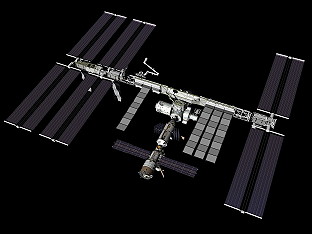 |
 |
 |
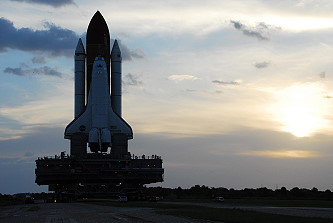 |
 |
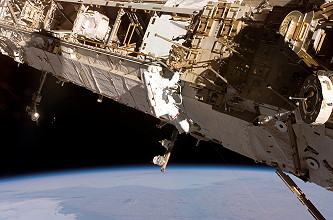 |
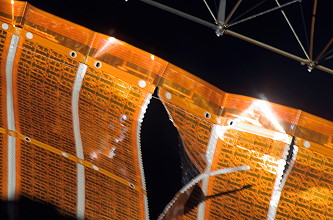 |
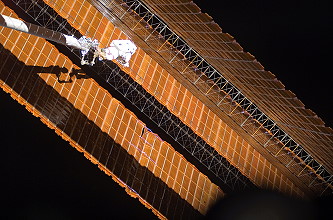 |
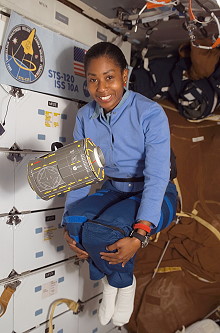 |
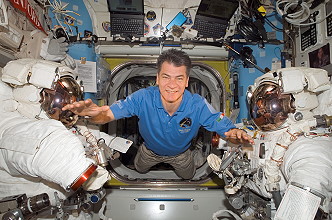 |
 |
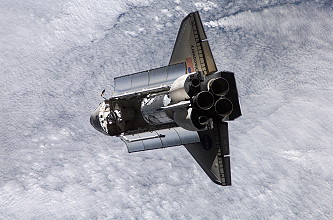 |
 |
 |
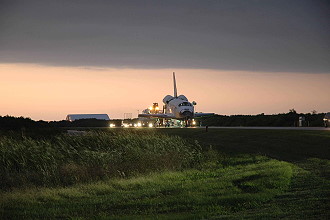 |
|
more EVA photos |
|
| © |  |
Last update on March 27, 2020.  |
 |